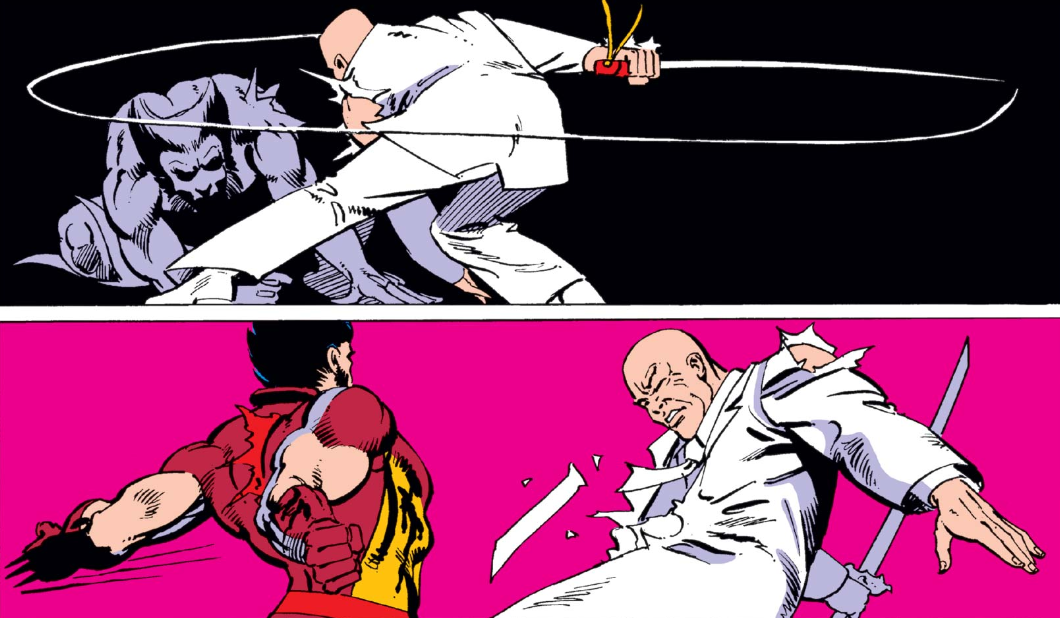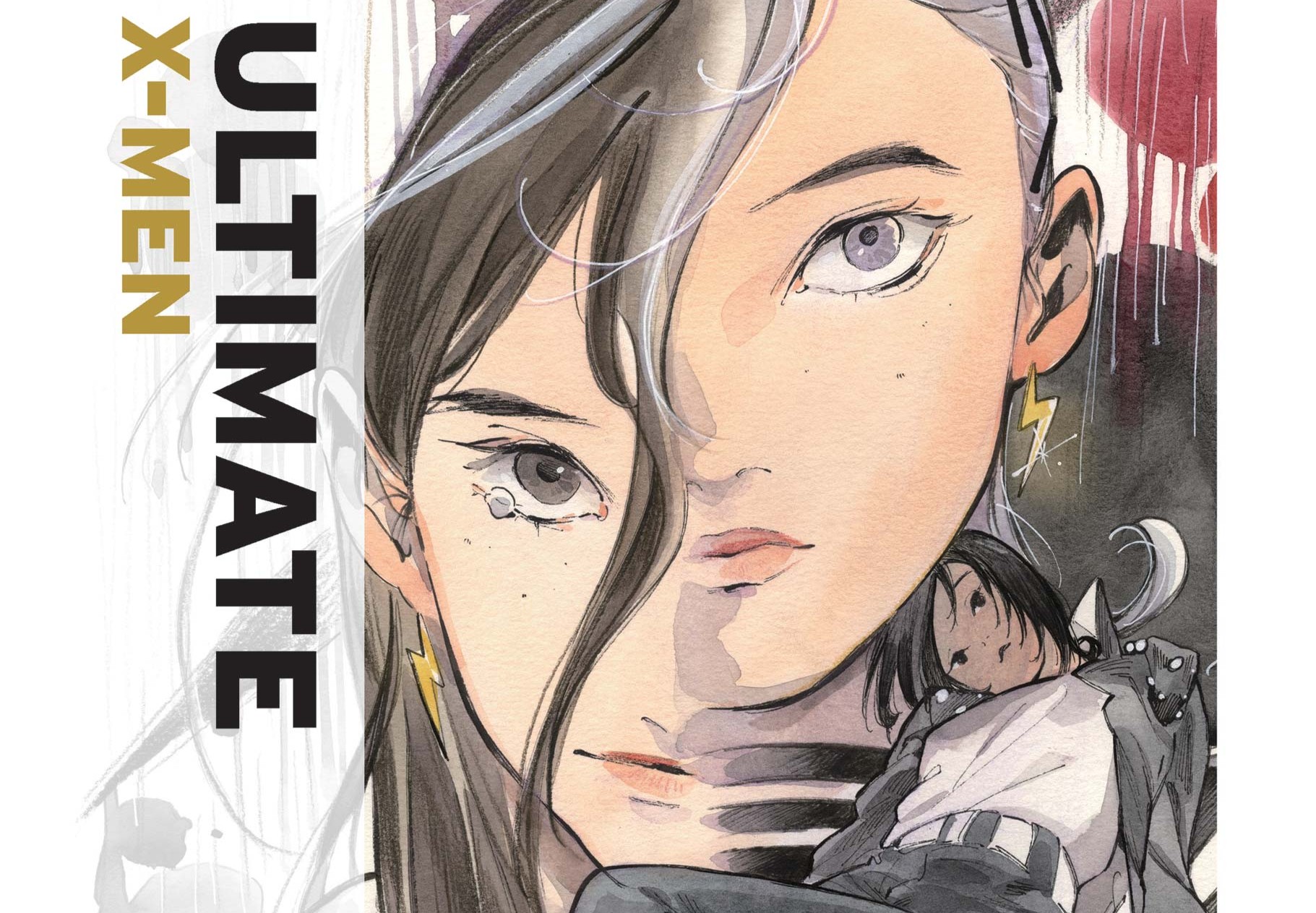Hobtown Mystery Stories, The Case of the Missing Men
Indie Thing Under the Sun
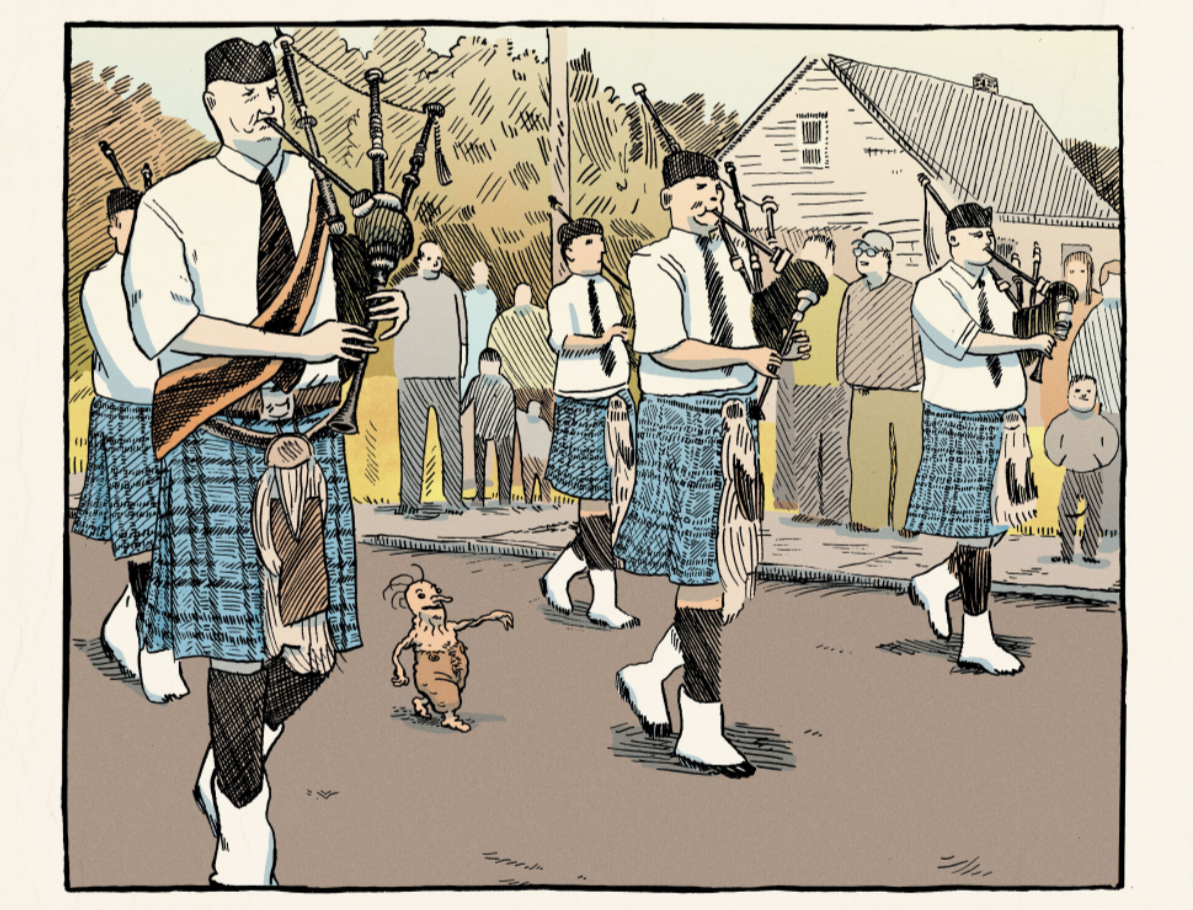
Review (Spoiler-Free)
Hobtown is a small Nova Scotia community with a population of 2,006. The small number of residents means it is pretty apparent and scary when folks begin to go missing. The local high school Detective Club is one of the first on the case, and the teen members are the main cast for the narrative. Despite the seeming genre familiarity of a Nancy Drew or Scooby-Doo mystery, The Case of the Missing Men telegraphs a darker tone from the start. The art plays between weird, unsettling, and beautiful with surprising ease.
The art style itself may be one of the most divisive aspects of the book, though its effectiveness is hard to deny. There are limited panels per page, often just one sitting on the white, akin to a Polaroid in a scrapbook. Detailed backgrounds contrast with expressive character designs and accentuate the contrast between the mindset of the main cast and the seriousness of the looming threat. There is a veil of innocence that feels seconds from being ripped away at any given moment.
The tension established by the visuals is sold thanks to the endearing characterization of the main crew. Teenagers from various backgrounds make up the Detective Club, which is joined by an off-putting but surprisingly capable new member at the story's start. Each character has a distinct voice, while many share a fear of vulnerability or expression. This creates intrigue into their many backgrounds and motivations, which keeps the pages turning.
The biggest disappointment from The Case of the Missing Men comes from some later revelations, with pointed caveats. Some of the outcomes of the mysteries feel designed with the idea of surprise more at the forefront than narrative fulfillment. Even when critical plot elements are finally laid bare, they are often so baffling they border on seeming incomplete. The strength of the dialogue and characterizations greatly softens the blow, leaving the reader invested in the people and world of the book despite any dangling confusion.
Hobtown Mystery Stories, The Case of the Missing Men, is a delight in all the creepiest ways. Readers looking for a sort of subversive nostalgia or a modern take on classic detective stories will find there is a lot to love. This volume is the first in a series, which is clear in how the plot unravels. The subsequent volume has yet to be released in color but is coming soon at the time of writing, with more installments scheduled to come out in the near future. These continuations may make up for some of the book’s weaknesses.
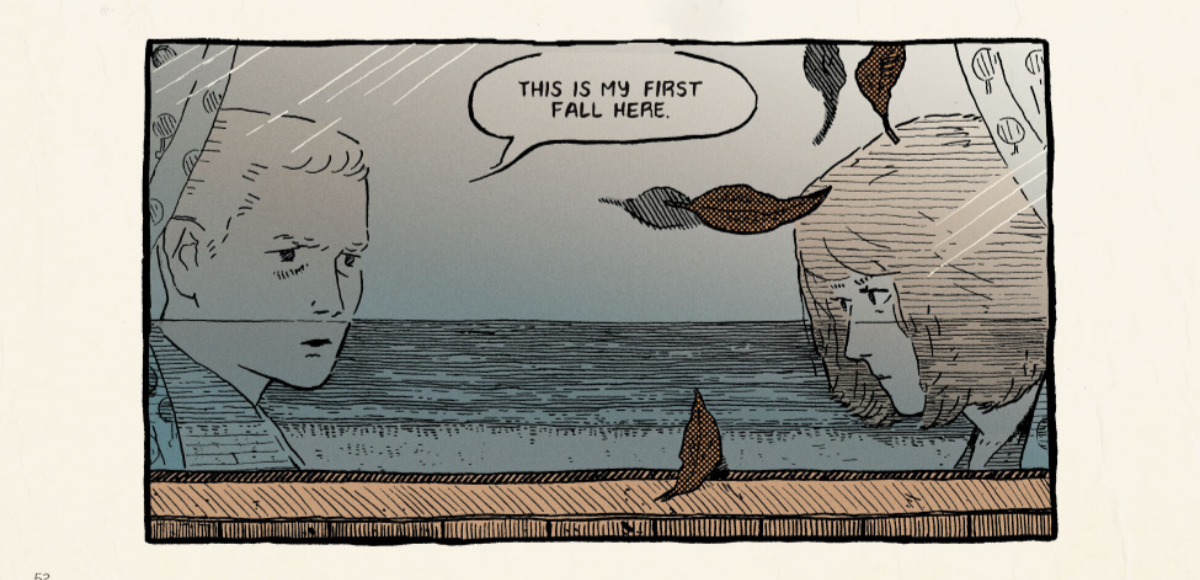
Analysis (Spoiler-Full)
The main cast of teen detectives for The Case of the Missing Men includes Dana, Pauline, Denny, Brennan, and newcomer Sam. The kids are fleshed out quite quickly and are as compelling as the mysterious plot itself. Similar to the book's overall structure, some characters are archetypal and familiar but dynamic enough to break expectations when the moment calls for it.
Dana is the leader of the crew and a certifiable Nancy Drew. Confident and bold, she works as a rival and parallel to both Pauline and Sam to varying degrees. The three are engaged in a subdued competition within their relationships to prove themselves, which introduces a pattern of games of increasing intensity, that will be reflected throughout the story. Dana’s attempts to prove herself and the stumbling blocks she faces are endlessly relatable and easily gain the reader’s investment.
Denny and Brennan, brothers, appear to be the blandest club members at a first glance, though they develop a certain amount of personality. While they are funny and likable, the two definitely feel swept into events, and they tend to exist within the plot, not driving it. They still have their heartwarming and exciting moments, but there is a lot of room left to explore these characters.
Arguably, the two most intriguing protagonists are Pauline and Sam, possibly in that order. Unknown to the others at the beginning of the book, Sam is a teenager steeped in talent and privilege. He travels the world, adventures with his venture capitalist father, and completes MIT courses in his free time. He enters as inexplicably talented and resourceful, but the realities of his life are slowly peeled back and revealed to the reader, particularly after the arrival of his friend and business partner, Dilan.
Sam is quite enjoyable and interesting from the start, but he really shines in the plot's back half. One of his best moments is a small one, but there is a lot of charm to the scene where Dilan remarks on Sam not wearing his glasses. Without a word, the young prodigy promptly produces the glasses from his jacket pocket and dons them for the remainder of the story. There is an amusing sense that Sam was embarrassed, or at least thought he could make the best impression by not wearing them. The ending for Sam is emotional but a bit disappointing, and his standout moments tend to be based around his burgeoning relationships with the rest of the Detective Club.
The final member of the club is Pauline, and she is one of the most cryptic. Presented with an uncanny ability to know the future and frequently spouting foreboding predictions, she is borderline suspicious for much of the book. Ultimately, Pauline, in many ways, is the opposite of Sam, coming from less wealth than the others and tapping into the supernatural side of the investigation instead of the hard-line detective work. She maintains unique relationships with each of the main cast in a way that reads more grounded and fleshed out than many of the others. Similar to Sam, her ending was underwhelming, but the expectation and hope is that future volumes will fully round out her story.
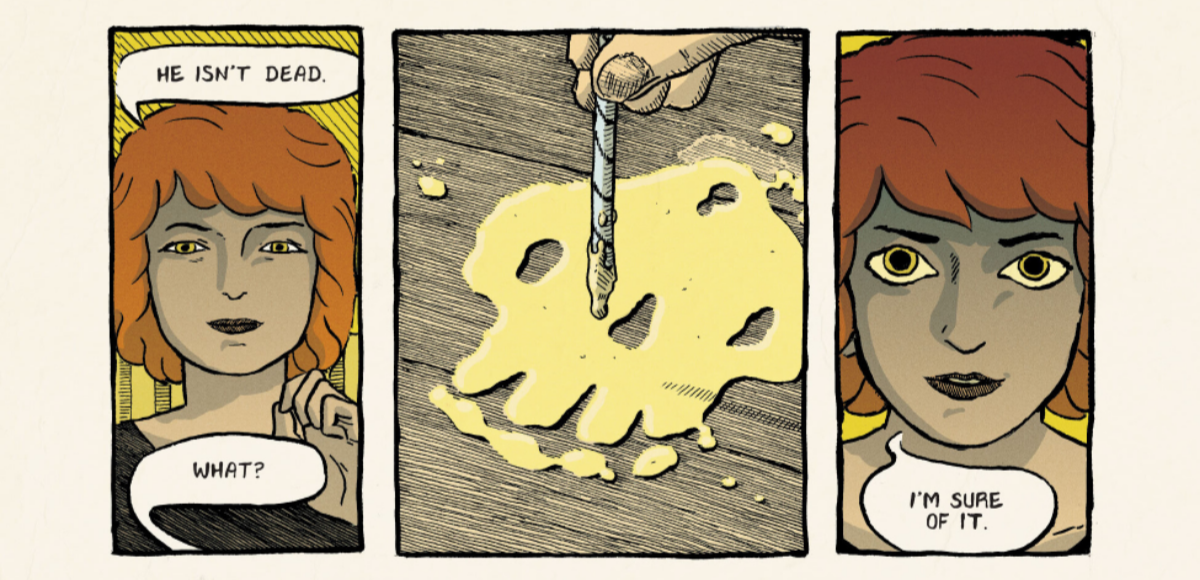
Art
The first few volumes of Hobtown Mystery Stories were printed in black and white, with the new color version coming out recently. It is astonishing that these were not originally colored, not due to any fault of the penciler, but simply because the colors feel so integral. Alexander Forbes's art is not lacking, and comparing the new printing to older versions, it is clear that certain style choices were made with the color palette in mind. Still, Jason Fischer-Kouhi’s colors aren’t tacked on or a gimmick of any sort. The dominating browns and grays being interrupted with bursts of oranges, yellows, and other bright colors elevates the book and gives a thematic boost to the finished package.
The abundant line work that fills the space of many panels and the distinct style of the faces are the biggest betrayers of the work's black-and-white past. Arguably, neither of these are drawbacks, and both work quite effectively in tandem with the subdued colors. Pauline’s characterization feels actively aided thanks to the stark contrasts in style that are extenuated. From the pages with a single panel depicting a boats floating in the harbor to close-ups of characters with evocative expressions, there is always something drawing the reader into the work. Balancing between beautiful and haunting, the art and writing come together to tell a fresh story that maintains a tinge of nostalgia.
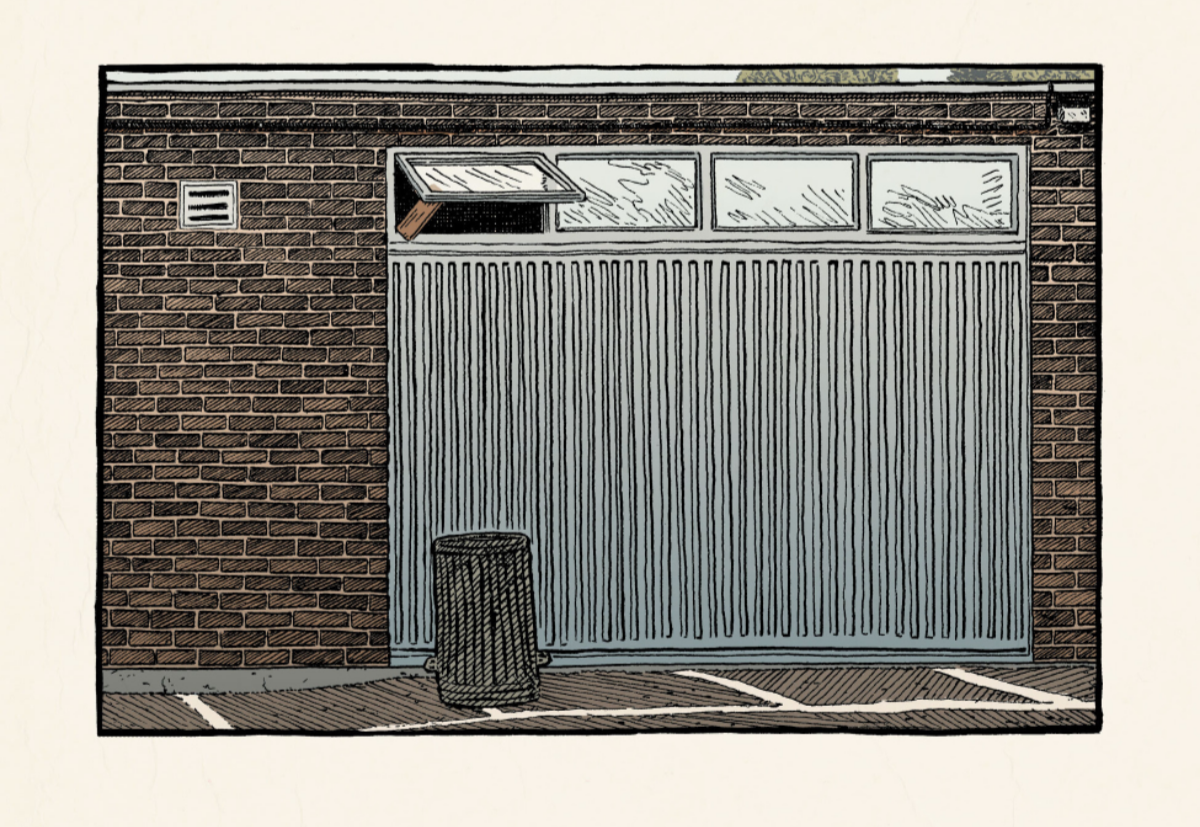
The Case
The heart of any detective story is the mystery, and The Case of the Missing Men stays true to this form. While the characters are genuinely charming and intriguing, the looming threat of the unknown drives the book as much as the cast. From the early encounter with Dana’s father in the woods, there is a seed planted for the reader that there is more to the story.
The revelation that twists the case is hinted at consistently, including when the narrative establishes backgrounds for characters like Dana and Sam. The slightly unfortunate aspect is that the supernatural forces of Hobtown are neither deductible nor well explained. Magic of some sort forces the population of the town to stay at a certain threshold, and this inspires the shenanigans the town folks engage in. It is fun, and it feels like the case is being solved as the book comes to an end, but it does not deliver. Sam’s arc, in particular, comes across as oddly reset thanks to the abrupt ending, and others suffer similarly.
Readers may feel that they finally grabbed the carrot that had been dangled in front of them, only for it to be snatched back after a single bite. The redemption is that the carrot is delicious, and chasing after another bite would be more than worth it.
Citation Station
- Hobtown Mystery Stories, The Case of the Missing Men, Kris Bertin (writer), Alexander Forbes (artist), Jason Fischer-Kouhi (colorist), Sarah Rockwell (designer), Zack Soto (editor), Bess Pallares (editor).

